Maximizing Fiber on a Keto Diet: Enhance Digestion Without Exiting Ketosis
This post may contain affiliate links. If you purchase through these links, I may earn a small commission at no extra cost to you. LEARN MORE.
Exploring a ketogenic diet often raises questions about balancing nutrients like fiber.
While the diet is famous for its low-carb approach, it is still possible to maintain digestive health without hindering ketosis.
Incorporating foods like low-carb vegetables, nuts, seeds, and avocados can ensure adequate fiber intake and support digestive well-being.
These options fit perfectly into a keto lifestyle while helping to meet daily fiber needs.
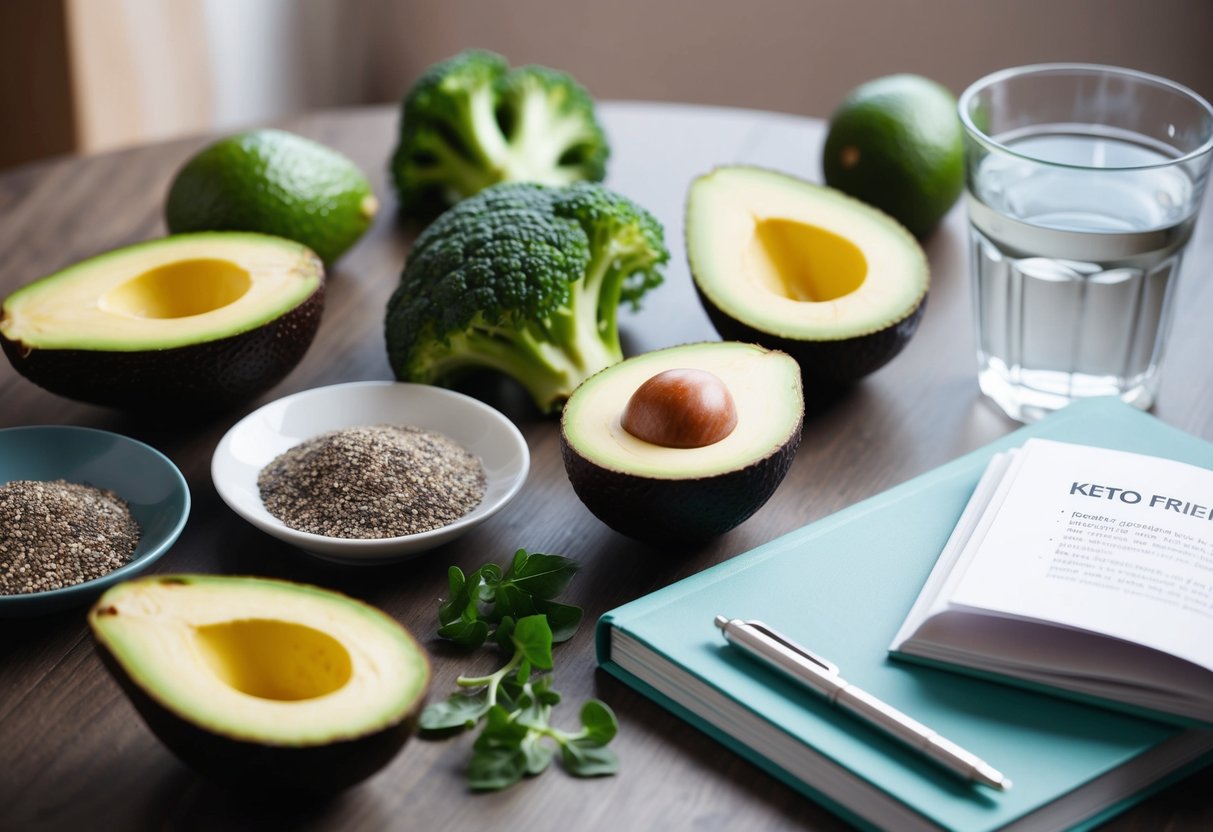
Fiber plays a crucial role in keeping the digestive system healthy, which is important even when focusing on low-carb meals.
Navigating the essentials of the keto diet while ensuring the benefits of fiber can be a rewarding journey.
By making smart food choices, anyone can maintain both ketosis and a healthy gut, combining the best of both worlds.
Readers often wonder how to find that balance between staying in ketosis and promoting digestive health.
By tapping into various fiber on keto diet sources, there’s a clear path to follow.
Including diverse foods can enrich any meal plan, keeping it healthy without disrupting the primary goals of the keto diet.
New to keto? Start with our Custom Keto Diet Explained for Beginners for a solid foundation.
Looking for a personalized approach? Check out our Custom Keto Diet for tailored meal plans that include high-fiber options!
Key Takeaways
- Fiber is crucial for digestive health on keto.
- Keto-friendly foods can fulfill fiber needs.
- Balancing fiber and ketosis is achievable.
Understanding Ketosis and Its Benefits
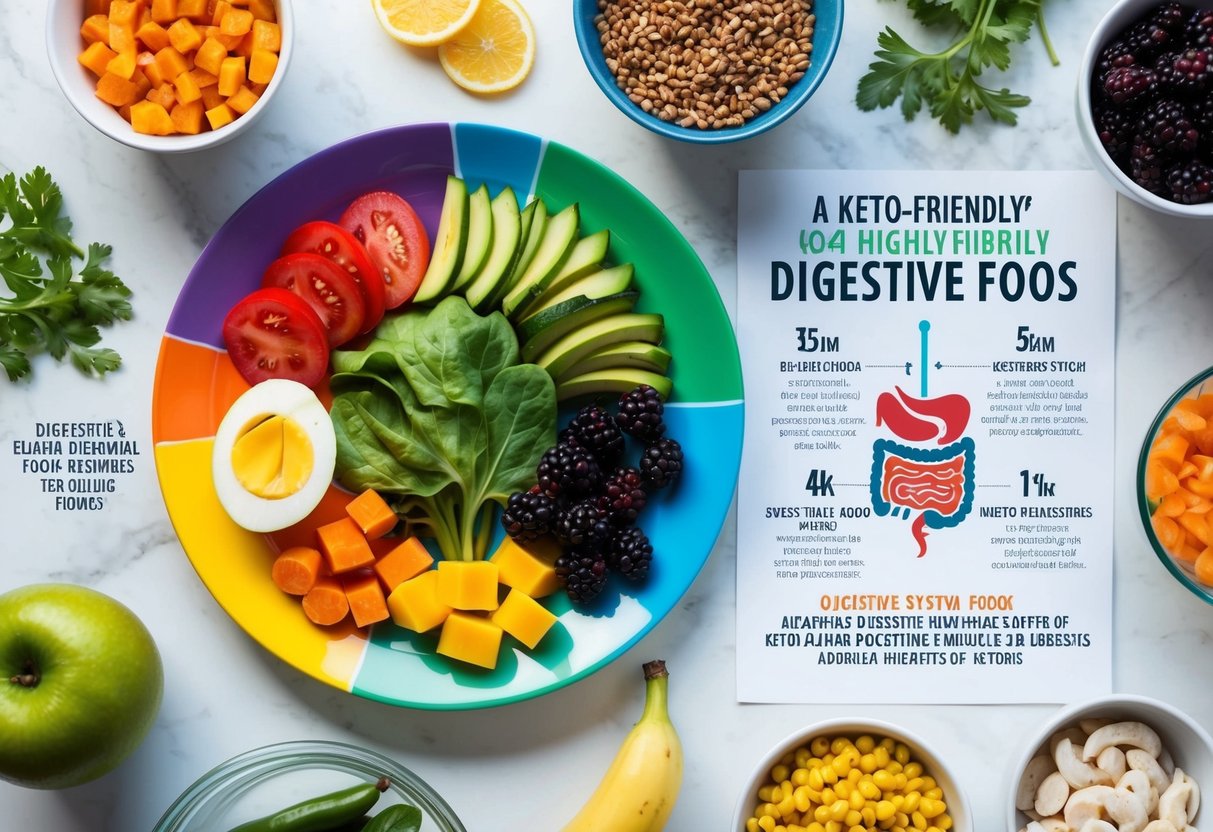
Ketosis is a metabolic state where the body uses fat instead of carbohydrates for energy.
This occurs when following a low-carbohydrate and high-fat diet, often known as the ketogenic diet.
When the body is in ketosis, it produces molecules called ketones. These ketones serve as an alternative fuel source for the brain and muscles.
This shift can lead to several potential benefits.
Fat Burning: Being in ketosis helps the body become efficient at burning fat. This can contribute to weight loss goals.
Mental Clarity: Many individuals report improved mental clarity and focus during ketosis. The brain uses ketones efficiently, which may enhance cognitive function.
Energy Levels: Some people experience stable energy levels when in ketosis. Without the highs and lows associated with spikes in blood sugar from carbohydrates, they may feel sustained energy throughout the day.
Overall, nutritional ketosis offers a unique way to fuel the body by prioritizing fats over carbs.
Want to optimize your keto journey? Dive into our guide on How to Calculate Macros for Keto to master your diet
The Importance of Fiber on Keto Diet
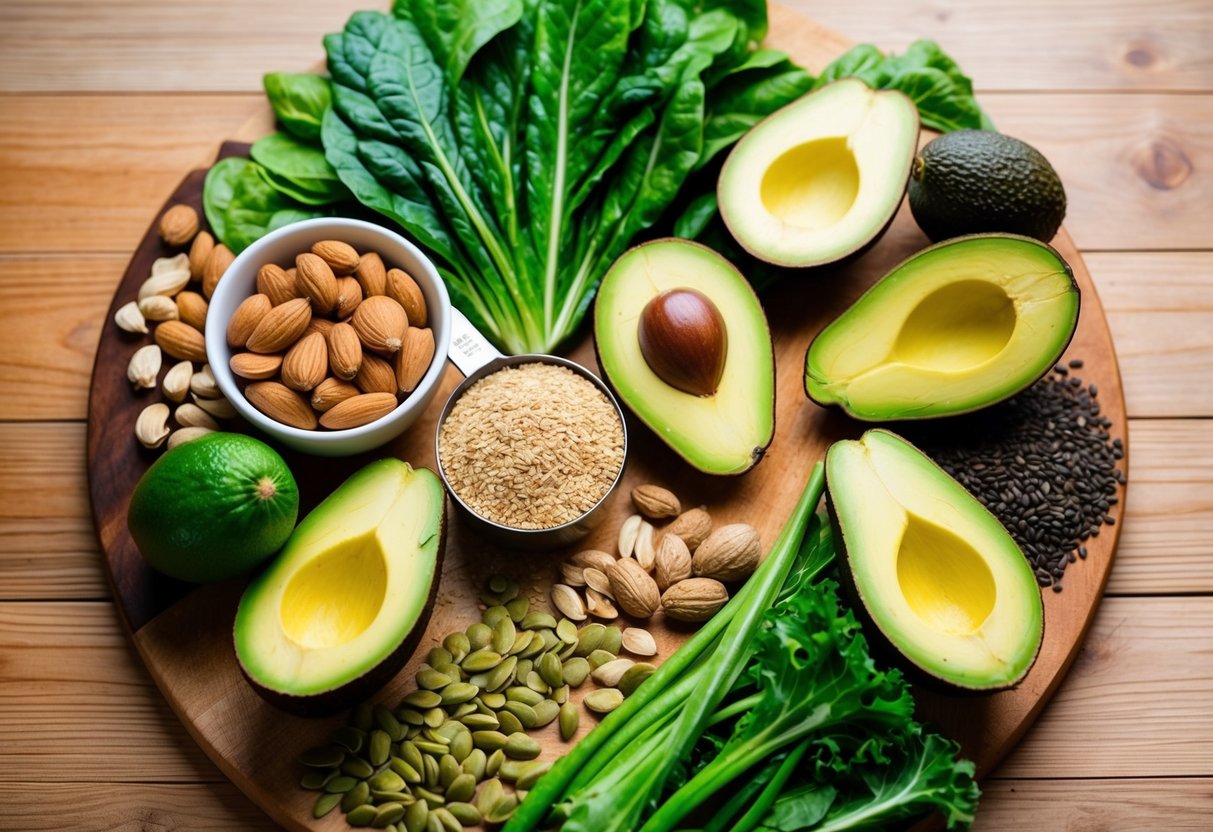
Fiber plays a significant role in maintaining digestive health and facilitating balance within a ketogenic diet.
While low-carb eating is a hallmark of keto, including the right amount of fiber can support digestion and overall well-being.
Roles of Fiber in Digestive Health
Fiber is crucial for keeping the digestive system running smoothly. It adds bulk to the stool, which aids in regular bowel movements and can prevent constipation.
This is particularly important on a ketogenic diet where low-carb intake might limit fiber-rich foods.
Dietary fiber can also promote the growth of good bacteria in the gut. This can improve gut health and enhance nutrient absorption.
Consuming fiber-rich foods like avocados, nuts, and leafy greens can help keto dieters maintain healthy digestion without increasing carb intake significantly.
Learn more about digestive health benefits in our post on Keto and Gut Health.
Balancing Macros with Fiber Intake
Balancing macronutrients on a keto diet is essential to stay in ketosis while ensuring enough fiber intake.
Fiber doesn’t count towards net carbs because it is not digestible. This allows for greater flexibility when planning meals.
High-fiber, low-carb foods like chia seeds and flaxseeds can enhance fiber intake effectively.
Incorporating these foods ensures dieters receive necessary nutrients without interrupting ketosis.
Considering supplements like psyllium husk can also be beneficial for those struggling to get enough fiber from food alone.
Sources of Keto-Friendly Fiber
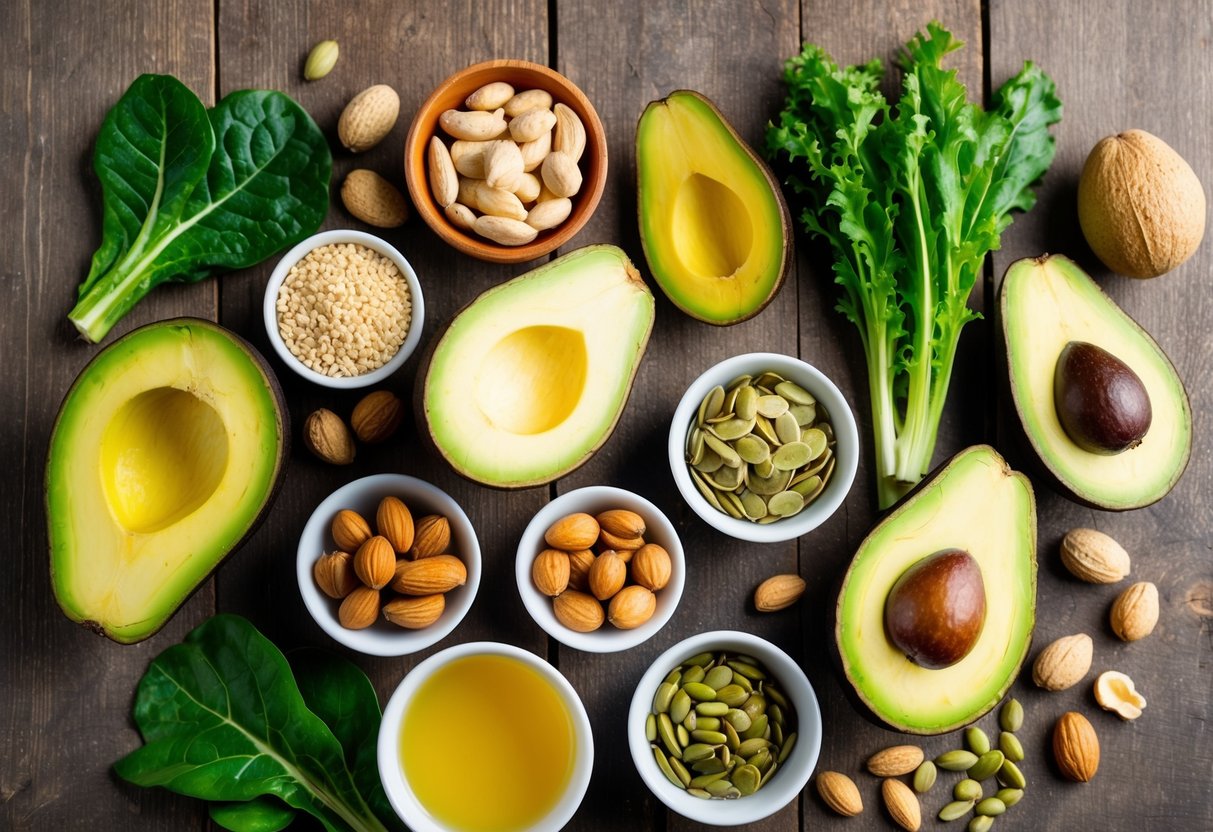
Finding fiber while staying in ketosis can be tricky, but it’s crucial for digestive health. Certain whole foods, nuts, and supplements can boost fiber intake without increasing carbs.
Vegetables and Whole Foods
Low-carb veggies are a great source of fiber.
Avocado is particularly rich in fiber, with about 7 grams in half a large one.
Broccoli is another excellent choice, providing about 2.4 grams of fiber per 100 grams, while keeping carbs low.
Seaweed is also a great addition. It’s low in carbs and can be included in salads or snacks. Vegetables like spinach and kale add fiber and other nutrients.
These foods help maintain fiber levels while adhering to keto guidelines.
Discover more on nutrient-packed veggies in our Ultimate Guide to Low-Carb Vegetables.
Nuts and Seeds
Nuts and seeds offer another great source of keto-friendly fiber.
Chia seeds and flaxseed stand out with high fiber content.
Chia seeds can be added to yogurt or smoothies, boasting about 10 grams of fiber per ounce.
Flaxseeds are versatile, with fiber content about 8 grams per tablespoon. Adding them to baking recipes or shakes is easy.
For a crunchy snack, almonds and pistachios work well.
Almonds provide around 3.5 grams of fiber per ounce. Just watch portion sizes to manage carb intake.
Stock up on premium nuts and seeds – view our Amazon picks for keto-friendly options.
Supplements and Alternative Fiber Sources
Supplements can help meet fiber needs without changing the diet’s macro balance.
Psyllium husk is a popular choice for keto dieters. It’s rich in soluble fiber and can be mixed into water or low-carb smoothies.
Nut milks made from almonds or coconuts can also contribute some fiber when fortified.
Incorporating products like coconut flour can boost fiber content in keto baking, supporting digestive health.
Using supplements smartly helps meet fiber intake goals without excess carbs.
Planning Fiber-Rich Keto Meals
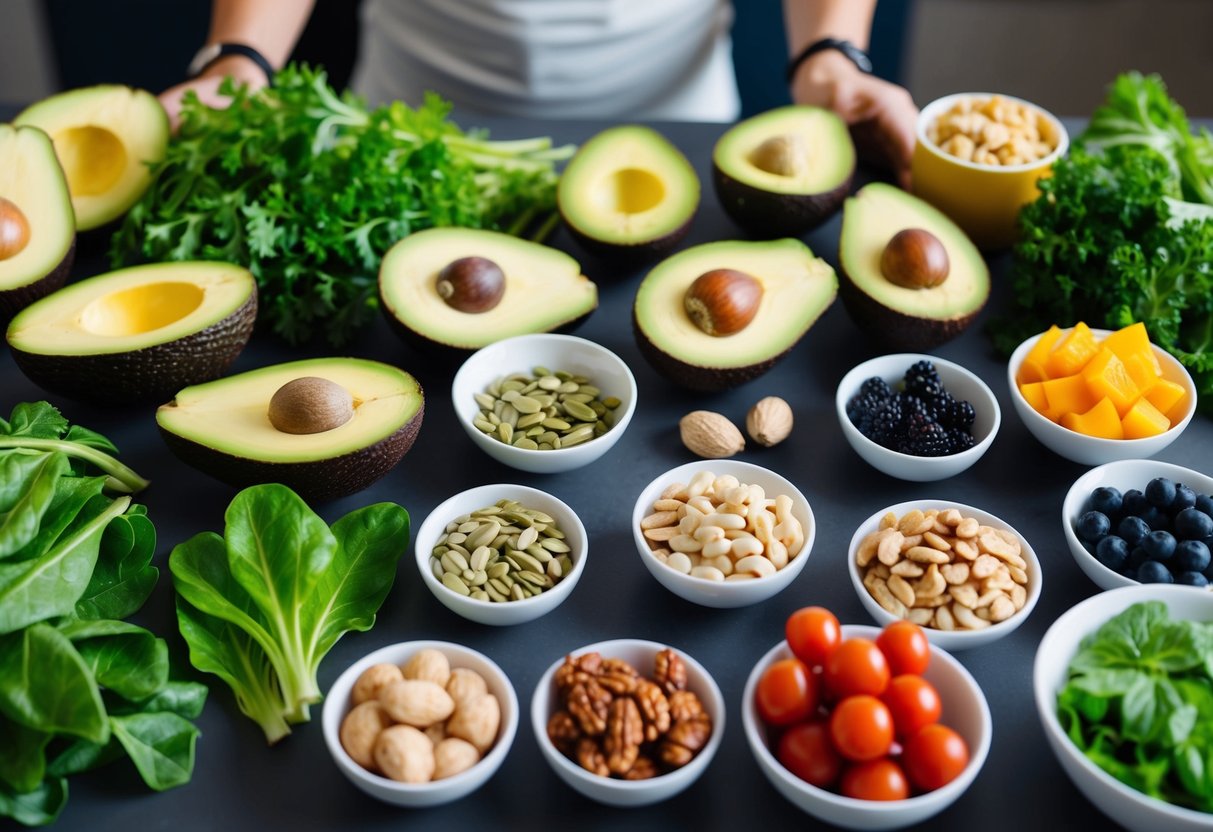
Maximizing fiber intake on a ketogenic diet involves careful meal planning and recipe selection. Keto-friendly foods should include both low carbs and high fiber for digestive health.
Example Meal Plans
Meal prepping with fiber-rich keto options allows consistent dietary adherence.
Breakfast can include a chia seed pudding with almond milk and berries, providing about 10 grams of fiber.
For lunch, a spinach salad with grilled chicken, avocado, and almonds offers a fiber boost.
Dinner might feature grilled salmon with a side of roasted Brussels sprouts and a sprinkle of flaxseeds, adding fiber without the carbs.
Snacks like celery sticks with almond butter or a handful of walnuts offer simple, high-fiber choices.
For more meal planning ideas, see our 7-Day Custom Keto Diet Meal Plan for Beginners.
Keto Recipes High in Fiber
Keto recipes can incorporate foods like flaxseeds, chia seeds, and leafy greens for fiber.
A flaxseed keto bread offers a hearty and fiber-filled alternative to regular bread. Mixing almond flour and flaxseed, this recipe provides a rich source of fiber.
Zucchini noodles with pesto and pine nuts make an easy-to-prepare, fiber-rich meal that fits a ketogenic diet. Another option is cauliflower rice with herbs and sautéed mushrooms, providing flavor and essential fiber.
Hungry for healthy recipes? Check out our Custom Keto Diet and get personalizes plan and inspiration!
Maximizing Health Benefits on a Keto Diet
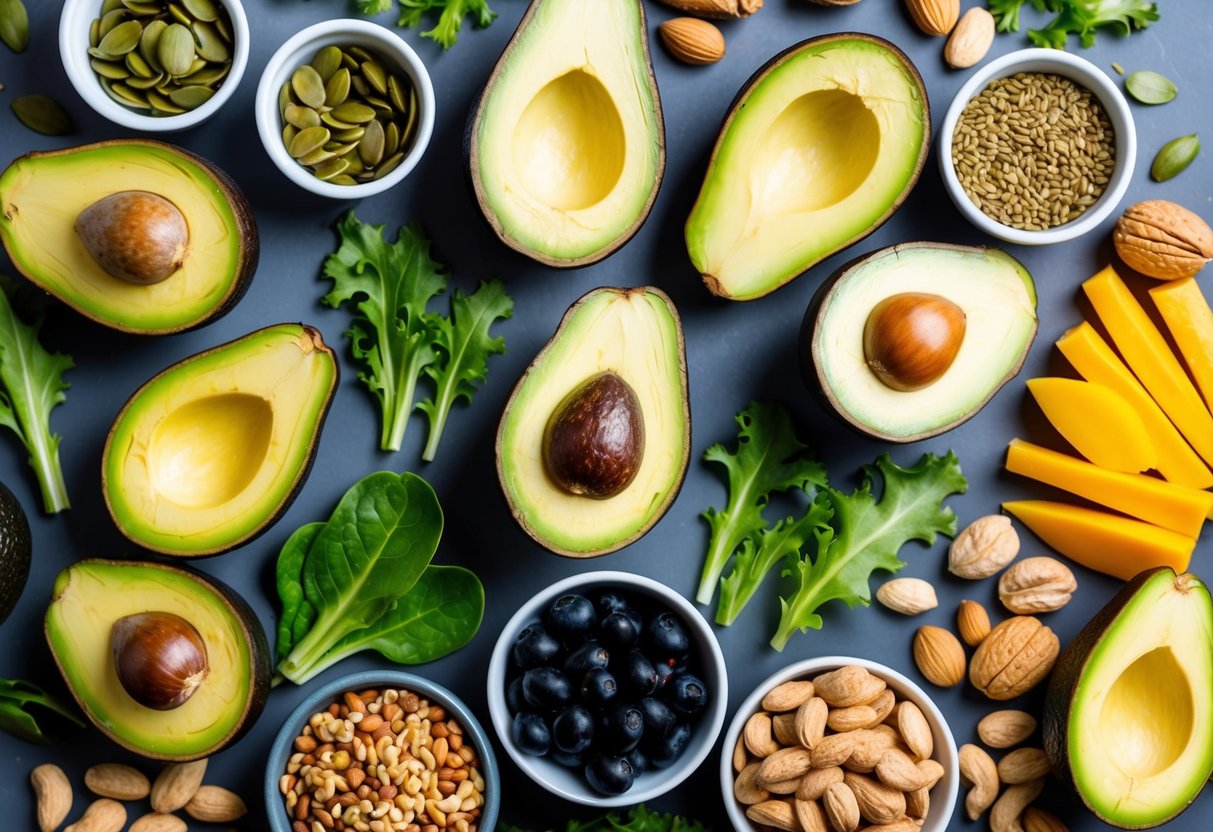
The ketogenic diet, a high-fat, low-carb plan, can provide several health benefits when followed correctly. This diet may support heart health and help manage weight and blood sugar levels.
Supporting Heart Health
A ketogenic diet can improve heart health by increasing levels of HDL cholesterol, often referred to as the “good” cholesterol. Higher HDL levels are linked to a reduced risk of heart disease.
Healthy fats, such as those from avocados and nuts, replace many carbohydrates in this diet. These fats can decrease triglycerides, potentially lowering risk factors for heart disease.
The diet can also reduce markers of inflammation, another factor in cardiovascular risk.
Eating more unprocessed, nutrient-dense foods helps in maintaining consistent improvements in heart health over time.
Learn how keto supports heart health in our related article Keto for Heart Health.
Managing Weight and Blood Sugar Levels
Many people experience significant weight loss on a ketogenic diet. By minimizing carbohydrate intake, the body starts burning fat for fuel, leading to weight reduction.
Insulin resistance, a precursor to type 2 diabetes, can improve with this diet.
Stable blood sugar levels are easier to maintain since carb intake is low, which reduces spikes in blood sugar and insulin.
For those with diabetes or prediabetes, following a keto plan may result in lower blood sugar and better control of their condition.
Careful monitoring and adjustment of medications can help align benefits with personal health goals.
Read more about managing blood sugar on keto in our post Is Keto Safe for Diabetics?
Dealing with Potential Challenges
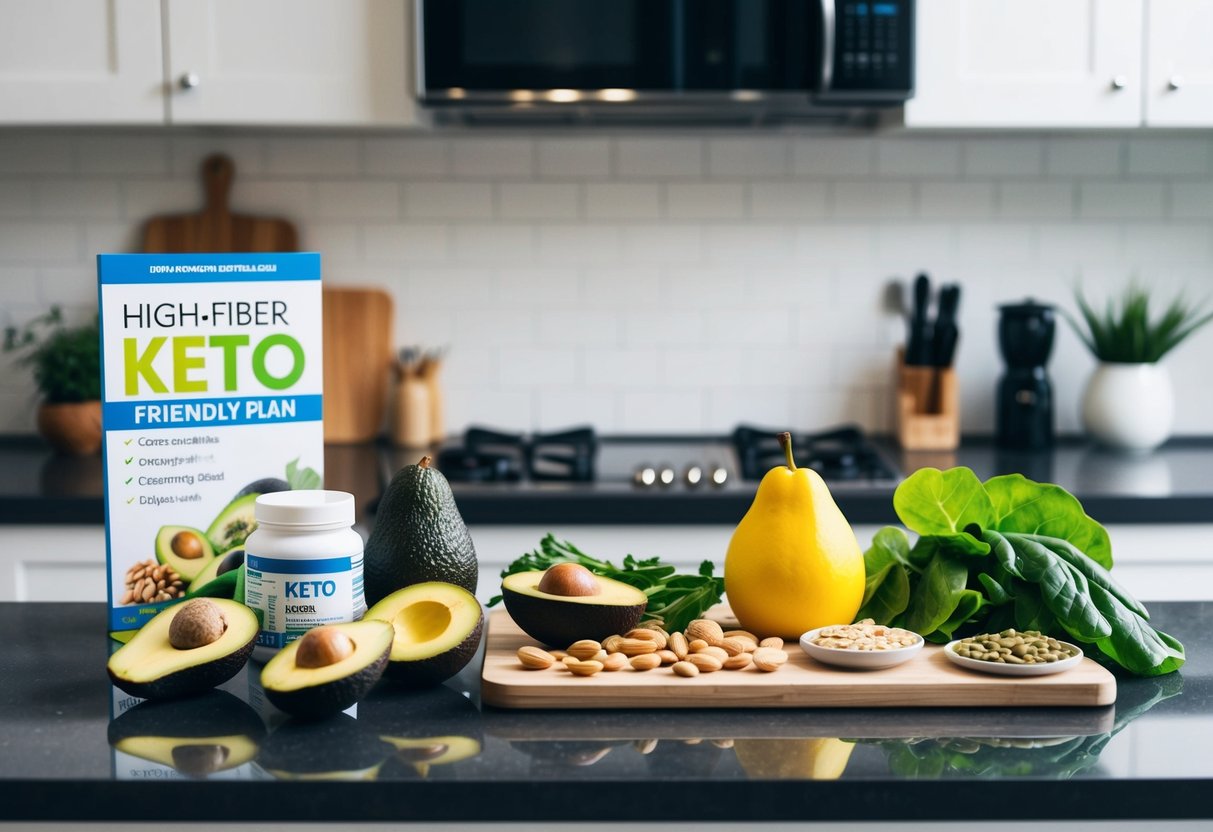
When following a ketogenic diet, individuals may face several challenges. Side effects like the “keto flu” and nutritional deficiencies are common, but there are strategies to manage these issues.
Addressing Common Side Effects
Many people experience the keto flu shortly after starting a ketogenic diet.
Symptoms can include headaches, fatigue, and cravings.
Staying hydrated and ensuring adequate electrolyte intake, including magnesium, is crucial.
Including leafy greens and avocados can help maintain electrolyte balance.
Moreover, digestive changes can occur due to a lower fiber intake.
Including fiber-rich foods like flaxseeds and chia seeds in the diet can improve digestion.
Choosing keto-friendly desserts with adequate fiber can help satisfy cravings without raising blood ketone levels.
Facing challenges on keto? Get expert support with our Custom Keto Diet plan!
Avoiding and Identifying Nutritional Deficiencies
Nutritional deficiencies may arise due to restricted food choices.
Ensuring sufficient vitamin D and omega-3 fatty acids intake is important.
Fatty fish and fortified foods can help meet these needs.
Monitoring for hidden sugars is essential to maintain ketosis and prevent unwanted carb intake.
Consuming a variety of nutrient-dense foods, such as cruciferous vegetables, can prevent deficiencies.
Multivitamins might be useful for filling nutritional gaps.
Regular blood tests can help identify and address deficiencies early, keeping the body healthy while maintaining ketosis.
Ensure balanced nutrition by revisiting our Avoid Mistakes on the Custom Keto Diet Tips.
Frequently Asked Questions
Maximizing fiber intake on a keto diet involves selecting the right foods and strategies.
This section addresses common questions, providing clear guidance on incorporating fiber without disrupting ketosis.
What are the top high-fiber foods that fit into a ketogenic diet plan?
Cruciferous vegetables like broccoli and cauliflower are excellent high-fiber options.
Avocados and chia seeds also offer healthy fats and fiber, making them suitable for keto.
Nuts and seeds, such as almonds, can further enrich fiber content.
Can fiber supplements be beneficial while following a keto diet?
Fiber supplements, such as psyllium husk or Metamucil, can be useful for those struggling to meet their fiber goals.
These can help maintain digestive health and prevent common side effects like constipation on a keto diet.
What is the best high-fiber breakfast option for someone on keto?
A chia seed pudding made with almond milk and topped with berries is a nutritious breakfast choice.
Adding a sprinkle of flaxseeds can boost the fiber content, making it a filling and keto-friendly meal to start the day.
How can I overcome constipation on a keto diet without compromising ketosis?
Staying hydrated and consuming enough fiber-rich foods can help alleviate constipation.
Including leafy greens and nuts in your meals can enhance fiber intake, promoting better digestion while keeping ketosis intact.
What are some key foods to avoid on keto to maintain dietary fiber intake?
To ensure appropriate fiber intake on keto, avoid processed foods and refined grains.
These can lead to a lack of fiber. Instead, focus on whole, natural foods like vegetables, seeds, and nuts.
How can beginners seamlessly integrate fiber into a keto diet regimen?
Start by including small portions of high-fiber vegetables in every meal.
Gradually incorporate nuts and seeds as snacks or meal toppings. Monitoring dietary changes and responding to your body’s needs will help ease the transition.
For a beginner’s guide to a balanced keto diet, see our Keto Diet for Beginners: Easy Tips to Kickstart Your Journey.
Conclusion
Balancing fiber intake while staying in ketosis is achievable.
With careful planning and a focus on the right foods, individuals can support digestive health without stepping out of ketosis.
Focus on Low-Carb Vegetables:
Vegetables like spinach, kale, and broccoli are excellent choices. They offer fiber without excessive carbs.
Incorporate Nuts and Seeds:
Almonds, chia seeds, and flaxseeds provide an additional source of fiber. They are versatile and can be added to many dishes.
Choose High-Fiber, Low-Carb Foods:
Foods like avocados not only supply healthy fats but also provide fiber. This can help maintain a balanced diet.
Monitor Fiber Levels:
Keeping track of fiber intake helps ensure the diet remains effective. This can support both digestive health and ketosis goals.
Plan your next week of meals with our 7-Day Custom Keto Diet Meal Plan for Beginners.
Ready to boost your digestive health and optimize your keto results? Start your Custom Keto Diet today and take control of your health!


